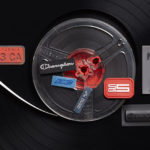For centuries humanity have been consuming meat to live. The animal skins left after the consumed
foods have always been the main material for the goods we have used since the existence of
civilization.
From the leather jackets we wear to the leather shoes, from the denim labels to the bags, do you
ever wonder how all the leather products are produced? The subject of this article will be how the
skins obtained from the animals are transformed into clothes and accessories and which processes
they go through to become suitable for human use. We will start with the first step, the tanning
process. So, let’s get started, how is this tanning done?
First of all, the skins collected from the slaughterhouse are taken to the leather factories. They are
grouped according to their race, biological characteristics, and size. After the skins are weighed,
wetting and softening are done. It is also cleansed from its impurities using water and chemical
washing. The water which is lost in the salting process is regained during this process. The hair on the
leather is cleaned with arsenic and lime. The skin gains volume and a spongy structure.
The skin is always milky in these initial stages. The tanning process starts for leathers that reach the
appropriate pH value. This tanning process can be done with aluminum, zirconium or chrome. There
are companies like us that produce and use “chrome free” (chrome-free leather). It is necessary to
care about human health and to produce alternatives. The tanned leather is now ready for
mechanical procedure and dyeing. The leathers are squeezed with a certain pressure in the felt
cylinders and the water rate is reduced. Unnecessary skirt parts of the leathers are stacked on top of
each other, cut and discarded.
The skin is shaved to adjust the ordered thickness. It is then weighed and taken to the painting
cabinets. Then dyeing, retannage and lubrication processes are carried out. Retannage covers the
gaps of the tanning and enhances its surface. Lubrication, on the other hand, provides flexibility and
softness, and it’s the method used to produce waterproof leathers.
The leather is passed through a machine to tighten the dyed leathers and to increase their area. Then
after a quick drying process in the vacuum machine, the leathers are finally hung to dry.
Now you have learned the tedious methods the leather has to go through, so that it can be suitable
for use by humans.


